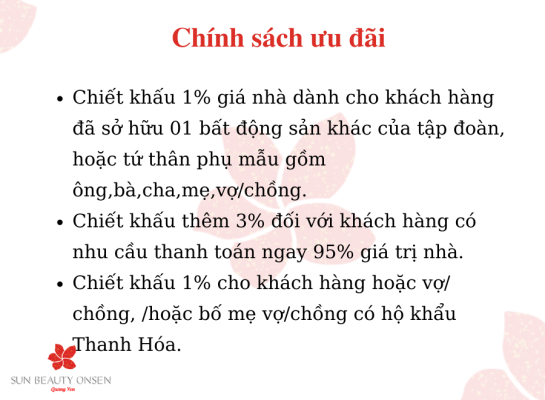- Unexpected Surge in Household Expenditure Fuels Optimism Amid breaking news today, Boosting Markets and Industry Confidence.
- The Drivers Behind Increased Household Spending
- Impact on the Retail Sector
- The Role of Consumer Confidence
- Implications for the Housing Market
- Regional Variations in Spending
- The Impact of Inflation on Consumer Choices
- Looking Ahead: Sustainability of the Spending Surge
Unexpected Surge in Household Expenditure Fuels Optimism Amid breaking news today, Boosting Markets and Industry Confidence.
The economic landscape is currently undergoing a fascinating shift, marked by an unexpected surge in household expenditure. This breaking news today is defying previous expectations of a slowdown, indicating a resilient consumer base and a potentially stronger economic outlook than previously anticipated. Experts are closely monitoring this trend, analyzing its implications for various sectors and overall market stability. The increase in spending is not uniform across all demographics, presenting a complex picture that requires careful examination.
This unexpected economic activity also fuels optimism among investors and industry leaders. Increased consumer spending directly translates to higher revenues for businesses, boosting confidence and encouraging further investment. The markets have responded positively, with several key indices showing significant gains in recent trading sessions. This renewed vigor suggests a potential turning point, moving away from earlier concerns about a looming recession.
The Drivers Behind Increased Household Spending
Several factors are contributing to this increase in household expenditure. A tightening labor market, with unemployment rates reaching historic lows, has provided more individuals with disposable income. Government stimulus measures, implemented in response to prior economic challenges, continue to have a lingering positive effect. Furthermore, pent-up demand, accumulated during periods of lockdown and restricted movement, is now being released as consumers regain confidence and freedom to spend.
However, it’s crucial to recognize that rising inflation is simultaneously eroding purchasing power. While income is increasing, the cost of essential goods and services is rising at an even faster rate, presenting a complex economic scenario. Consumers are adapting by shifting their spending habits, prioritizing essential items, and seeking out value-for-money options.
| Discretionary Goods | 8.5% |
| Essential Goods | 6.2% |
| Services (Entertainment, Travel) | 12.1% |
| Healthcare | 4.8% |
Impact on the Retail Sector
The retail sector is experiencing a significant boost from the surge in household spending. Department stores and online retailers alike are reporting increased sales across a wide range of product categories. However, the competitive landscape is intensifying, with businesses vying for consumer attention through innovative marketing strategies and competitive pricing. This heightened competition will likely lead to further innovation and a more customer-centric approach in the retail industry.
Smaller, independent retailers are facing unique challenges in adapting to this changing environment. They often lack the resources to compete with larger chains on price or marketing spend. However, many are successfully differentiating themselves by offering personalized customer service, unique product selections, and a strong sense of community. This highlights the ongoing importance of niche markets and specialized offerings.
The Role of Consumer Confidence
Consumer confidence plays a pivotal role in driving economic growth. When individuals feel optimistic about their financial prospects, they are more likely to spend money, invest in the future, and take on debt. The recent surge in household expenditure is a clear indication of improved consumer confidence. This positive sentiment is fueled by factors such as the strong labor market, rising wages, and a perceived easing of economic uncertainty.
However, consumer confidence can be fragile and susceptible to external shocks. Geopolitical events, unexpected economic downturns, or even negative media coverage can quickly erode optimism and lead to a decrease in spending. It is essential for policymakers to carefully monitor consumer sentiment and implement measures to maintain stability and promote long-term economic health.
- Increased demand for goods and services.
- Higher revenues for businesses.
- Growth in the labor market.
- Potential for inflation.
- Shifting consumer spending patterns.
Implications for the Housing Market
The increase in household expenditure also extends to the housing market, albeit with some nuanced effects. While higher interest rates are dampening demand for mortgages, the strong labor market and rising incomes are offsetting some of these pressures. Homeowners who feel secure in their employment and financial situation are more willing to invest in home improvements and renovations.
The housing market, however, remains sensitive to shifts in economic conditions. A significant increase in unemployment or a sharp decline in consumer confidence could trigger a downturn in housing prices. It is crucial for potential homebuyers to carefully assess their financial situation and consult with financial advisors before making any major investment decisions.
Regional Variations in Spending
The surge in household expenditure is not uniformly distributed across all regions. Metropolitan areas, with their robust economies and higher median incomes, are experiencing the most significant increases in spending. Rural areas, however, are lagging behind, reflecting structural economic challenges and limited access to opportunities. Understanding these regional variations is crucial for tailoring economic policies and allocating resources effectively.
These disparities also highlight the importance of investing in infrastructure and promoting economic development in underserved regions. Creating jobs, improving education, and expanding access to healthcare are essential steps toward bridging the gap between prosperous and struggling communities. A more equitable distribution of economic benefits will contribute to a more sustainable and resilient economy.
| Northeast | 7.8% | 3.2% |
| Southeast | 9.1% | 3.5% |
| Midwest | 6.5% | 3.0% |
| West | 8.2% | 3.8% |
The Impact of Inflation on Consumer Choices
While consumer spending is on the rise, the persistent issue of inflation is significantly shaping consumer choices. Individuals are becoming more price-conscious and actively seeking out discounts, promotions, and alternative brands. This trend is benefiting discount retailers and private label brands, which offer comparable quality at lower price points. Retailers are responding by emphasizing value and offering a wider range of affordable options.
Inflation is also prompting consumers to reconsider their discretionary spending habits. Non-essential purchases, such as luxury goods and entertainment, are being cut back as individuals prioritize essential expenses. This shift in spending patterns is creating challenges for businesses that cater to discretionary demand, forcing them to adapt and innovate to remain competitive.
- Strong Labor Market
- Government Stimulus
- Pent-up Demand
- Rising Inflation
- Shifting Consumer Habits
Looking Ahead: Sustainability of the Spending Surge
The sustainability of this surge in household expenditure remains a key question for economists and policymakers. While the current economic indicators are positive, several potential risks could disrupt this momentum. A resurgence of inflation, a global recession, or a geopolitical crisis could all trigger a slowdown in spending. It is essential to remain vigilant and proactively address these potential threats.
Long-term economic stability requires a balanced approach that prioritizes both growth and sustainability. Investing in education, infrastructure, and renewable energy will create long-term economic opportunities and improve the quality of life for all citizens. Prudent fiscal policies and responsible monetary policy are essential for maintaining price stability and fostering a resilient economy.
| GDP Growth | 2.8% | 2.5% |
| Inflation Rate | 4.2% | 3.8% |
| Unemployment Rate | 3.6% | 3.7% |
| Consumer Confidence Index | 105.5 | 106.2 |
The current economic outlook is cautiously optimistic, bolstered by this unexpected increase in household expenditure. However, navigating the complexities of rising inflation and potential economic headwinds will require careful planning, proactive policies, and a commitment to sustainable economic growth. Monitoring key indicators, adapting to changing conditions, and fostering a resilient consumer base will be critical for ensuring continued economic prosperity.



























